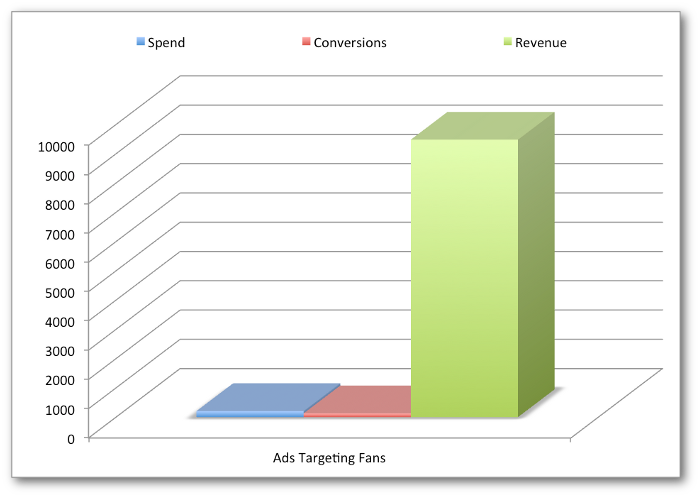
SEO is about attracting non-paid search traffic to your website. The idea is that a person searches the Web using Bing or Google, etc. and your site comes up in the non-paid search results. To that end, it’s important to make sure your website is easily understood by both people and machines.
- People = your target market, your ideal website visitors.
- Machines = search engines like Google and Bing.
It’s a problem if your website confuses people and they can’t easily find what they’re looking for. Or they can’t smoothly accomplish the tasks they want to complete (or you want them to complete).
But did you know it’s also a problem if your website confounds machines? It’s common for websites to have technical roadblocks that create problems for machines trying to understand or even find pages on your website.
Does your site need a makeover? Find out using…
The Portent 2014 SEO Website Makeover Checklist
Compare your website to this checklist. It’s not in any particular order so you can jump in and start your makeover pretty much anywhere on this list. You’ll be able to figure out if a checklist item is meant to make it easy for machines or for people. If not, just hit me up in the comments section at the end.
- Does your home page instantly and clearly communicate what you offer? Are you sure?
- Does each page have a page-relevant unique title tag?
- Does each page have a page-relevant unique meta description?
- Does each page have a clear and concise headline?
- Do your page URLs convey an indication as to the topic or content of the page?
- Do your pages use interesting unique images and make use of a relevant image ALT attribute?
- Does your page content truly inform or engage?
Don’t just answer “yes!” to the above questions, be objective and honest. The above list could keep you busy for quite a while… but here’s more:
- Are any pages on your website duplicates of any other page on your website (either by accident or on purpose)?
- Are any pages on your website duplicates of any other page on other websites you have (either by accident or on purpose)?
- Do any pages on your website contain text that is duplicated on any other website on the Internet (either by accident or on purpose)?
- Are topically related pages of content logically linked together in a way that’s useful to site visitors?
- Are any of the links on your site leading to “404 page not found” error pages?
Your content should be 100% unique on the Internet. Not 50% or even 99% unique, 100%. Broken links frustrate visitors and provide dead ends for machines so be sure to fix those. Got all that done? Let’s keep going…
- Is your site navigation easy to find, understand, and use?
- If someone landed on any page of the site, would they be able to instantly figure out where they were in the site hierarchy?
- Does your site have clear calls to action?
- Is your site rife with jargon and technical terms you use all the time but your target market does not use or understand?
- Do your site visitors get a clear indication of what will happen if they fill out a form, click a link, or take some recommended action?
- Do you provide a sitemap of pages in case someone wanted to see a complete “menu” of your website?
Here’s more stuff you need to attend to:
- Do your site pages load in a browser in less than 3 seconds?
- Do you have an XML sitemap?
- Are you making proper use of a robots.txt file?
- Are you making appropriate use of structured markup? (See schema.org for more info.)
- Have you set up Google+ authorship and/or publisher cross links?
- Is your site displaying well and is it usable on a smart phone?
- Are you putting content in technology that machines can’t understand like Flash or iFrames?
Got all that done already? Now check the following:
- Does your site code have huge blocks of JavaScript that could be moved to an external file?
- Does your site code have blocks of CSS that could be moved to an external file?
- Are you 100% sure that you have your analytics tracking tags deployed properly on each and every page of your site?
- Are you providing site search functionality to your visitors? Does it provide frustratingly irrelevant results?
- Does http://www. display in front of your domain name and also http://?
- Are all of your site’s links hyperlinking directly to the target URL, or do any of them pass through redirects?
Don’t stop now, you’re on a roll!
- Does Google Webmaster Tools report crawl errors you need to fix?
- Does Google Webmaster Tools report HTML improvements you need to make?
- Are images compressed?
- Are images properly scaled?
- Is your navigation still visible and usable if you turn off JavaScript in your browser?
Wrap up & TL;DR
This is not meant to be an “all-inclusive SEO checklist.” There is no such thing because every site has specific needs, problems, target markets, and technology stacks. When it comes to making your site better for both humans and machines, you want your distance from perfect to be as close to zero as possible.
I guarantee that by using this website makeover checklist you will find at least 3 things you need to fix or otherwise attend to with your team.



 Social media is a rapidly changing industry. You can be a skilled social media marketer or an enthusiastic newbie that has social in their blood, but keeping up with the changes is highly important for your work.
Social media is a rapidly changing industry. You can be a skilled social media marketer or an enthusiastic newbie that has social in their blood, but keeping up with the changes is highly important for your work.



 Before embarking on any social media marketing campaigns, it is essential to set your goals and define your prospects or target audience. Without a clear understanding of what you want to achieve and who you want to reach, your promotional campaigns will not be focused and the results may be fragmented and weak.
Before embarking on any social media marketing campaigns, it is essential to set your goals and define your prospects or target audience. Without a clear understanding of what you want to achieve and who you want to reach, your promotional campaigns will not be focused and the results may be fragmented and weak.